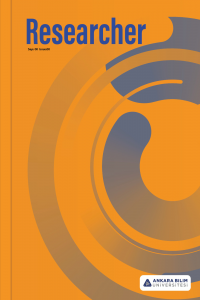SUSUZ LİTOGRAFİ
Susuz Litografi, 20. yüzyılın sonunda, düşük ve orta toksik malzemelerin kullanılmasıyla elde edilen sanatsal oymacılıkta sürdürülebilirlik kavramı içinde gelişmiştir. Susuz litografi, temel olarak metal plakalarla ilişkilendirilen ekolojik, temiz ve basit bir prosedürdür. Susuz litografinin mucidi Nik Semenoff' dur. Susuz litografide "yağ itici" işlevi, terebentin ile seyreltilmiş silikon yerine getirilir. Plakayı kaplayan ince silikon tabakası, boyaları itmektedir. Bu yeni litografik uygulama, geleneksel litografide olduğu gibi, doğrudan metal plaka üzerine yapılan bir çizimin basılmasını sağlar. Bu uygulama, silikonun yağ bazlı mürekkeplerin itme prensibine dayanmaktadır. Litografi ve ofset litografi, suyun yağ ile karışmaması özelliğine dayanan planografik süreçlerdir. Görüntünün basılma süreci, suyla birlikte geleneksel litografide olduğu gibidir. Aradaki fark, silikon tabakasının, suyun işlevini yerine getirmesidir. Silikon plakanın mürekkeplenmesi sırasında mürekkep, yalnızca metalin silikon olmayan alanlara biriktirmesinden oluşur. Alüminyum plakalar, kullanım kolaylığı ve intaglio baskı preslerine basılması avantajına sahiptir. Susuz litografinin güçlü tonlu baskılar üretme kabiliyeti vardır. Bu makalede, susuz litografinin uygulama yöntemleri, yeni gelişmeler ve taş litografisi ile Susuz Litografi arasındaki temel farklar anlatılmıştır
Anahtar Kelimeler:
Susuz Litografi, Toksik, Metal Plaka, Silikon
WATERLESS LITHOGRAPHY
Waterless Lithography developed at the end of the 20th century in the concept of sustainability in artistic carving, which was obtained by using low and medium toxic materials. Anhydrous lithography is an ecological, clean and simple procedure primarily associated with metal plates. Nik Semenoff, the inventor of anhydrous lithography, uses the "oil repellent" function, which is diluted with turpentine, to absorb the thin silicone layer, which pushes the paints. This application is based on the principle of pushing the silicone ‘soil printing inks. Planographic flat printing from a raised surface such as embossing or printing surface engraving like engraving or lithography, lithography, water mis alignment. The difference is that the image printed with water is the same as that of conventional lithography, the difference being that the silicon layer functions as water and the ink during the inking of a silicone plate is deposited in the areas of the image where the metal is exposed without silicon. It has the advantage of ease of use and intaglio printing presses offered by aluminum plates. Waterless lithography has the ability to produce strong tonal prints. In this article, the origin of stone lithography, new developments in an hydrous lithography and the main differences between the two are described
Keywords:
Waterless Lithography, Toxic, Metal Plate, Silicone,
___
- Artist illistiratör https://www.artistsandillustrators.co.uk/how- to/printmaking/1953/how-to-make-a-painterly- phttp://www.ndiprintmaking.ca/?p=29rint e.t:12.01.2019
- PrıntmakıngSısters https://www.annieday.com.au/ 23.12.2018
- WarringahPrintmakersStudio http://www.printstudio.org.au/sa/wl.html#top 15.08.2018 printWiki http://printwiki.org/Waterless_Lithography et.:13.01.2019
- East LondonPrintmakers https://www.eastlondonprint
- AnnieDay ve Robin Ezra: FPS'de Susuz Litografi http://www.fps.org.au e.t:10.02.2019 https://www.arte-online.net e.t:22.09.2018
- ISSN: 2717-9494
- Yayın Aralığı: Yılda 2 Sayı
- Başlangıç: 2013
- Yayıncı: Ankara Bilim Üniversitesi
Sayıdaki Diğer Makaleler
Sınava Hazırlık Sürecinin Bireyin Okuma Alışkanlığı Üzerinde Etkisi: 8.Sınıf Örneği
Sevil BÜYÜKALAN FİLİZ, Dilan KALAYCI
Öğretim Programı Tasarlama Sürecinde Yenilenmiş Bloom Taksonomisinin Bir Model Olarak İncelenmesi
Rekreasyonel Sosyal Sağlık Ölçeğinin Geçerlik Güvenirlik Çalışması
Almancadan Türkçeye Çeviride İkilemeler: Stefan Zweig’ın Satranç Eseri Örneğinde Bir İnceleme
Güncel Kadın Sağlığı Konuları: Etik ve Yasal Durum Nedir?
Arzu ABİÇ, Duygu VEFİKULUÇAY YILMAZ
Bir İnsan Hakları İhlali: Namus Cinayetleri
